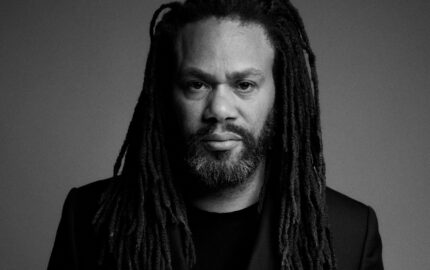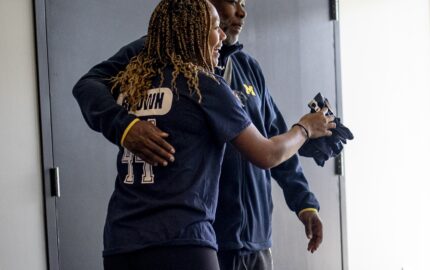The National Association of Science Writers gave Erik Vance a 2015 Science in Society award for science reporting for his story “Why Nothing Works,” published in Discover magazine, saying his “masterful command of metaphor and vivid anecdote knit an excellent tapestry of the science behind the placebo effect, the ethical issues it raises, and its implications for improved medical care." Vance is a biologist-turned-journalist whose work has been published in The New York Times, Nature, Scientific American, Harper’s, and National Geographic. He’s currently working on his first book, for National Geographic Press, about how the mind and body continually twist and shape reality. A native of the San Francisco Bay area, he now lives in Mexico.
I was raised in Christian Science, and I’m very interested in the healings I saw there. How much those healings rely on placebo is up for debate, but that’s certainly some of it. Anyway, I went to a conference of brain scientists as a journalist and saw someone I knew from the Christian Science community delivering a lecture on placebos. Really, it was like seeing a recovering Catholic deliver a lecture on guilt. It was the perfect connection for me, finding that there is this science connected to this big part of my childhood. I got hooked on the topic and wound up going to a placebo conference in Europe. For a long time placebo studies were a little fringe-y, but there is now a younger generation bringing in some very hard science. It’s a really young field chock full of characters, and there’s not yet a placebo “establishment.” You’d think there would be some research establishment focused on placebo, because it’s the foundation of Western medicine and is the difference between what’s considered a drug and what is not, but there is still very little official interest. In 20 years it might not be as much fun.
My editor at Discover was Pam Weintraub, and I could not have done this story without her. I was following this very new stuff about placebos, and she was able to bring in the discovery and history of endorphins. She had covered that herself once and was able to put this new stuff into perspective. She said, “This material is more important than you even know,” and I didn’t have the bandwidth to know that. It was a lesson in how we need to bring young writers and older editors together.
I always try to focus on what readers really want to hear. I track this at parties with people who have had a lot of drinks: How can I get that person interested for 10-20 minutes in this great stuff? I practice a lot with people verbally and see what captures their interest, then give up on the rest. You can’t say everything. And I look for characters. The placebo story is a human story because any time you’re talking about brains, you’re talking about real people, both the people who are studying it and the people experiencing it. If you can’t find good characters, you’re not trying hard enough. My favorite thing about being a scientist was hanging out with scientists and other smart people and finding out what they’re doing. They’re such great characters and, so often, their personality parallels their work. I know one person who studies pain, and she’s really into heavy metal—her music sounds like airplane engines—and other negative experiences. I told her, “You study pain and this is your music and you don’t see the connection? That’s the kind of detail I love.
The most challenging part of all this is understanding the topic as well as I can before I go and talk to “real” people. Because when I talk to them, I need to be able to spot the bits that are important to the story. That means I often have to work my way through scientific papers, even though that’s not my strength. Sometimes, I need to call the scientists and say, ‘Hey, what are we talking about here?” But then, when I go out to talk to fishermen and they say something like, “It’s not that we’re running out of fish, but they’re getting smaller and smaller,” I’ll realize that is actually an important part of the science. That’s really important for understanding what’s going on in the oceans, but I wouldn’t have spotted it when it came up unless I understood the literature.
I moved to Mexico because my wife got a job here, so I didn’t really have much choice. But Mexico is an amazing place to work. They’re our neighbor and our third biggest trading partner, but we know almost nothing about the country. It’s an overlooked place, and there is a tremendous amount of laboratory and field science going on here. I did a story on blue-footed boobies, and the science was phenomenal and would have been reported all over the place if the scientist had been in the U.S. But no one heard about it, because he was from Mexico. That happens a lot. The same passions are here, the same bizarre behaviors exist among Mexican scientists that interest me in all scientists. I met one Mexican scientist who did anti-venom research, and he loved venomous creatures. He had pet Gila monsters at home. Scientists are quirky everywhere! I feel I have an open canvas here and am bringing attention to a place that gets a lot of negative press, some of it deserved and some not deserved. It’s pretty nice to be here instead of being crammed into New York with a thousand other science writers.
“Why Nothing Works” is a great blend of narrative with new research and thinking on placebos. What led you to the story?
I was raised in Christian Science, and I’m very interested in the healings I saw there. How much those healings rely on placebo is up for debate, but that’s certainly some of it. Anyway, I went to a conference of brain scientists as a journalist and saw someone I knew from the Christian Science community delivering a lecture on placebos. Really, it was like seeing a recovering Catholic deliver a lecture on guilt. It was the perfect connection for me, finding that there is this science connected to this big part of my childhood. I got hooked on the topic and wound up going to a placebo conference in Europe. For a long time placebo studies were a little fringe-y, but there is now a younger generation bringing in some very hard science. It’s a really young field chock full of characters, and there’s not yet a placebo “establishment.” You’d think there would be some research establishment focused on placebo, because it’s the foundation of Western medicine and is the difference between what’s considered a drug and what is not, but there is still very little official interest. In 20 years it might not be as much fun.
How much difference was there between your query and your finished article?
My editor at Discover was Pam Weintraub, and I could not have done this story without her. I was following this very new stuff about placebos, and she was able to bring in the discovery and history of endorphins. She had covered that herself once and was able to put this new stuff into perspective. She said, “This material is more important than you even know,” and I didn’t have the bandwidth to know that. It was a lesson in how we need to bring young writers and older editors together.
Can you talk about how you turn fairly dense science into narrative?
I always try to focus on what readers really want to hear. I track this at parties with people who have had a lot of drinks: How can I get that person interested for 10-20 minutes in this great stuff? I practice a lot with people verbally and see what captures their interest, then give up on the rest. You can’t say everything. And I look for characters. The placebo story is a human story because any time you’re talking about brains, you’re talking about real people, both the people who are studying it and the people experiencing it. If you can’t find good characters, you’re not trying hard enough. My favorite thing about being a scientist was hanging out with scientists and other smart people and finding out what they’re doing. They’re such great characters and, so often, their personality parallels their work. I know one person who studies pain, and she’s really into heavy metal—her music sounds like airplane engines—and other negative experiences. I told her, “You study pain and this is your music and you don’t see the connection? That’s the kind of detail I love.
Are there things you always do when reporting and writing a story?
The most challenging part of all this is understanding the topic as well as I can before I go and talk to “real” people. Because when I talk to them, I need to be able to spot the bits that are important to the story. That means I often have to work my way through scientific papers, even though that’s not my strength. Sometimes, I need to call the scientists and say, ‘Hey, what are we talking about here?” But then, when I go out to talk to fishermen and they say something like, “It’s not that we’re running out of fish, but they’re getting smaller and smaller,” I’ll realize that is actually an important part of the science. That’s really important for understanding what’s going on in the oceans, but I wouldn’t have spotted it when it came up unless I understood the literature.
You say on your website that being a science groupie is the best job you can imagine, especially in Mexico. Why Mexico?
I moved to Mexico because my wife got a job here, so I didn’t really have much choice. But Mexico is an amazing place to work. They’re our neighbor and our third biggest trading partner, but we know almost nothing about the country. It’s an overlooked place, and there is a tremendous amount of laboratory and field science going on here. I did a story on blue-footed boobies, and the science was phenomenal and would have been reported all over the place if the scientist had been in the U.S. But no one heard about it, because he was from Mexico. That happens a lot. The same passions are here, the same bizarre behaviors exist among Mexican scientists that interest me in all scientists. I met one Mexican scientist who did anti-venom research, and he loved venomous creatures. He had pet Gila monsters at home. Scientists are quirky everywhere! I feel I have an open canvas here and am bringing attention to a place that gets a lot of negative press, some of it deserved and some not deserved. It’s pretty nice to be here instead of being crammed into New York with a thousand other science writers.


